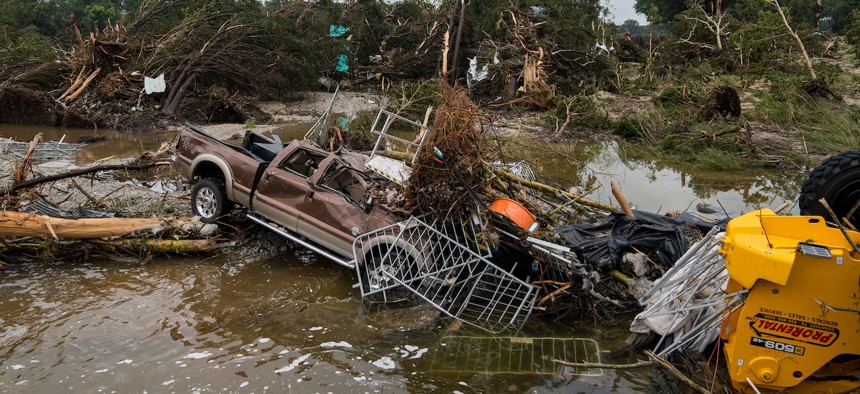Texas Floods Spark Debate Over Federal Workforce Cuts
In the wake of the devastating floods that struck Texas recently, several Democratic lawmakers have raised concerns regarding the impact of workforce reductions implemented during the Trump administration, particularly among meteorologists. Senator Chris Murphy emphasized, “Accurate weather forecasting helps avoid fatal disasters,” suggesting that these cuts might have hindered the National Weather Service’s (NWS) ability to provide timely forecasts and alerts for the floods.
However, White House Press Secretary Karoline Leavitt countered those claims, stating on Monday, “These offices [of the NWS] were well staffed… so any claims to the contrary are completely false.” An investigation by BBC Verify into the staffing situation at the NWS revealed that while cuts had occurred, the personnel available during the Texas floods were sufficient for forecasting purposes.
Understanding the Reductions
The Trump administration proposed a substantial 25% cut to the National Oceanic and Atmospheric Administration’s (NOAA) annual budget of $6.1 billion, which oversees the NWS. These proposed budget cuts are set to be enforced starting in the 2026 financial year, and thus, did not contribute to the recent flooding incident.
However, previous staffing reductions occurred under an initiative aimed at enhancing government efficiency, which began in January. The Department of Government Efficiency (Doge), previously led by Elon Musk, offered federal workers voluntary buyouts and early retirement, resulting in approximately 600 lost positions at the NWS, out of a total workforce of around 4,200 employees. As a consequence, many offices across the country faced significant staffing shortages.
| Staffing Change | Number Lost |
|---|---|
| Voluntary Redundancies | 200 |
| Early Retirements | 300 |
| Fired Employees | 100 |
As reported by the Associated Press, data indicated that about 50% of NWS offices were experiencing a vacancy rate that was double compared to ten years ago. Nevertheless, climate experts who spoke to BBC Verify asserted that the forecasts and warnings released during the Texas flooding were adequate given the circumstances. “Forecasting such extreme localized rainfall is inherently challenging,” noted Avantika Gori, an assistant professor at Rice University.
Local Operations and Staffing Issues
Despite the adequate warning systems, some experts argue that staff reductions might have hindered effective communication between local NWS offices and emergency management services. Climate scientist Daniel Swain from UCLA pointed out potential flaws in the communication process, suggesting that such limitations could have been mitigated if more staff had been present.
The San Angelo and San Antonio offices, which oversee areas impacted by the flooding, were found to have existing vacancies. The San Antonio office, for instance, was reported to lack multiple meteorologists, while the San Angelo office was without a senior hydrologist at the time. However, both offices had brought in additional personnel in anticipation of severe weather, following standard protocol.
“All forecasts and warnings were issued in a timely manner,” confirmed NWS spokeswoman Erica Grow Cei. Furthermore, NWS meteorologist Jason Runyen mentioned that staffing for the San Antonio area was temporarily increased to help manage the crisis effectively.
President Trump, when asked about the staffing cuts and their impact, denied any significant role, stating firmly, “No, they didn’t.” Meanwhile, the discussion continues regarding the extent of budget cuts on critical weather forecasting capabilities.

